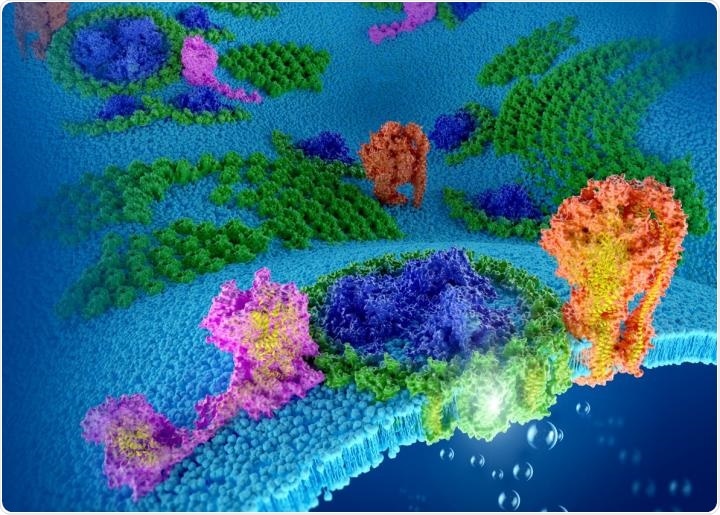Biological membranes perform significant functions in shaping the cell, transporting molecules, sensing the external environment, and producing energy for life. Thylakoid membranes are one of the major biological membranes produced in algae, cyanobacteria, and plants and perform the light reactions of photosynthesis.

Illustration of the cyanobacterial thylakoid membrane. Image Credit: Zhao, L., Huokko, T., Wilson, S. et al.
At the University of Liverpool, scientists have unraveled the organizational landscape and molecular architecture of thylakoid membranes from a model cyanobacterium like never before. The study has been reported in the Nature Plants journal and could help find new and advanced artificial photosynthetic technologies for producing energy.
Cyanobacteria perform plant-like photosynthesis. Hence, thylakoid membranes from laboratory-grown cyanobacteria are the ideal model system for studying and tuning plant photosynthesis.”
Luning Liu, Study Lead Author, University of Liverpool
The team employed sophisticated atomic force microscopy (AFM) to examine the organization and structures of photosynthetic proteins inside the thylakoid membranes. The outcomes show how thylakoid membranes regulate the abundance of various photosynthetic proteins and form structurally unstable complexes to adapt according to the changing environments.
We observed that different protein complexes have their specific locations in the thylakoid membranes. We also visualized that distinct photosynthetic complexes can be close to each other, indicating that these photosynthetic complexes can form ‘supercomplex’ structures to facilitate electron transport between these protein complexes.”
Dr Longsheng Zhao, Study First Author, University of Liverpool
Professor Luning Liu stated, “The development of structural biology approaches has greatly improved our understanding of individual photosynthetic complexes. However, these techniques have limitations for studying membrane multi-protein assembly and interactions in their native membrane environment. Our research has proved the power and potential of AFM in exploring complex, dynamic membrane structures and transient protein assembly.”
The team hopes that the current study could enable arriving at solutions to regulate the photosynthetic efficiency of crop plants to improve plant growth and productivity.